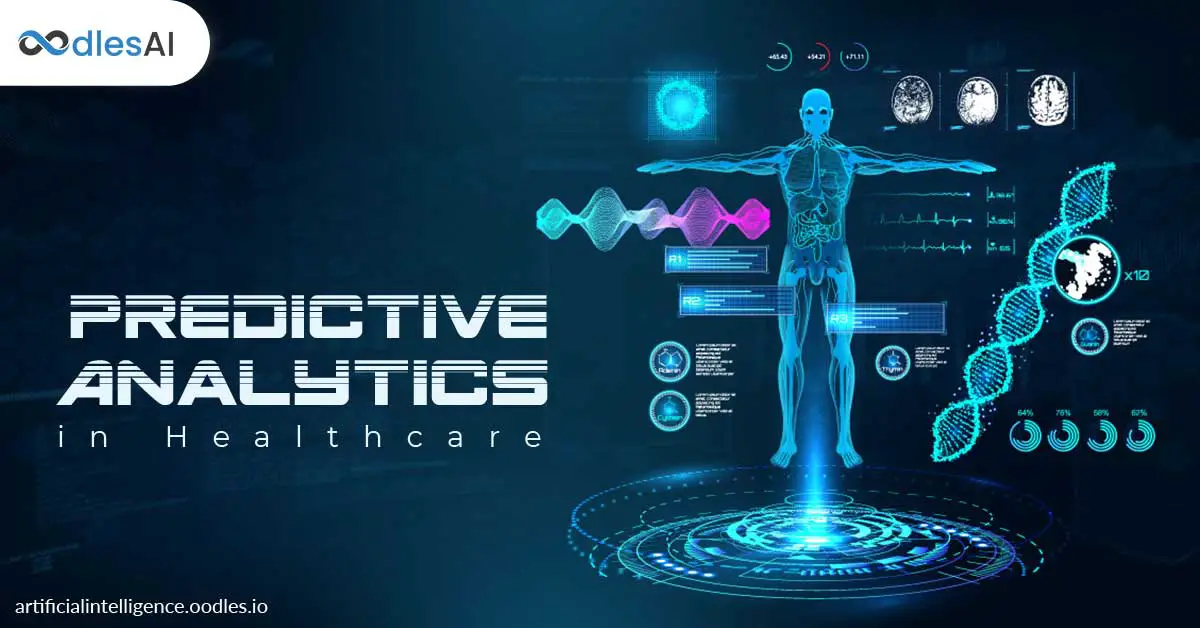Predictive analytics involves the use of data, statistical algorithms, and machine learning techniques to identify patterns and predict future events. AI plays a crucial role in predictive analytics, providing computational power, learning capabilities, and the ability to handle large and complex datasets.

1. Data Processing and Preparation:

- AI enables efficient data processing and preparation, which is essential for effective predictive analytics.
- Algorithms can clean, transform, and extract meaningful features from raw data, reducing manual effort and improving data quality.
2. Advanced Algorithms and Techniques:

- AI offers a wide range of advanced algorithms and techniques for predictive analytics, including supervised learning, unsupervised learning, and reinforcement learning.
- These techniques allow AI systems to learn from data, identify patterns, and make predictions with a high degree of accuracy.
3. Machine Learning and Deep Learning Models:
- AI-powered machine learning models can learn from historical data to make accurate predictions about future events.
- Deep learning models, a subset of machine learning, are particularly effective in handling complex, unstructured data.
4. Real-Time Data Analysis:
- AI enables real-time data analysis, allowing organizations to respond quickly to changing conditions and make informed decisions.
- AI systems can continuously monitor data streams, identify anomalies, and generate real-time insights.
5. Improved Accuracy and Precision:
- AI algorithms are capable of processing vast amounts of data and identifying intricate patterns, leading to improved accuracy and precision in predictive analytics.
- This can result in better decision-making and more effective outcomes.
6. Automation and Efficiency:
- AI-driven automation in predictive analytics streamlines data processing, model building, and prediction generation tasks.
- This enhances efficiency, saves time, and allows organizations to focus on strategic initiatives.
7. Integration with Business Systems:
- AI-powered predictive analytics can be integrated with various business systems, enabling seamless data exchange and the deployment of insights directly into decision-making processes.
- This integration enhances the overall efficiency and effectiveness of organizational operations.
In conclusion, AI plays a crucial role in predictive analytics by providing powerful data processing capabilities, advanced algorithms, real-time data analysis, improved accuracy, automation, and seamless integration with business systems. As a result, AI enables organizations to make data-driven decisions, gain deeper insights into their operations, and achieve better outcomes.# The Role Of Ai In Predictive Analytics
Executive Summary:
In the era of big data, the utilization of artificial intelligence (AI) in predictive analytics has revolutionized decision-making processes across industries. By leveraging machine learning algorithms, AI empowers the analysis of massive data sets to uncover hidden patterns and relationships. The insights gained through predictive analytics propel businesses to forecast future trends, optimize resource allocation, and effectively manage risks. This comprehensive report delves into the various facets of AI’s significant role in the field of predictive analytics, shedding light on its capabilities and applications.
Introduction:
In today’s expansive digital landscape, businesses and organizations have access to unprecedented volumes of data. However, the true power lies in transforming this deluge of data into actionable insights that drive strategic decision-making. Here, the intersection of AI and predictive analytics unveils a new realm of possibilities. This article aims to explore the profound impact of AI on predictive analytics, providing an in-depth analysis of how this synergy empowers businesses to anticipate future outcomes, tailor customer experiences, and harness data-driven growth.
AI Applications in Predictive Analytics:
1. Enhancing Data Accuracy and Quality:
The process of predictive modeling relies heavily on the accuracy and reliability of the underlying data. AI algorithms play a pivotal role in data cleansing, identifying missing values, and correcting inconsistencies within large datasets. Techniques like probabilistic data fusion and supervised learning enable AI to derive accurate estimates for missing values, ensuring the integrity of the data fed into predictive models.
2. Automated Feature Engineering:
Extracting meaningful features from raw data is pivotal in predictive modeling. AI algorithms automate this cumbersome process, transforming raw data into a format that is readily consumable by modeling algorithms. These algorithms employ dimensionality reduction techniques, feature selection, and transformation methods to optimize data for modeling, ultimately leading to enhanced predictive accuracy.
3. Predictive Modeling and Machine Learning:
At the heart of predictive analytics lies the construction of predictive models. AI leverages machine learning algorithms, such as regression, decision trees, and neural networks, to discern patterns and relationships within data. These models utilize historical data to forecast future outcomes, predict customer behavior, and identify potential risks. The iterative nature of machine learning algorithms empowers models to learn from new data, continuously refining their predictions over time.
4. Real-Time Analytics and Stream Processing:
Predictive analytics extends beyond historical data analysis. AI enables real-time analytics, empowering businesses to derive insights from streaming data in near real-time. This feature is invaluable in domains like fraud detection, network intrusion detection, and real-time recommendations, where timely intervention is crucial for effective decision-making.
5. Natural Language Processing for Text Analysis:
Natural language processing (NLP) algorithms play a crucial role in extracting insights from textual data. AI-powered NLP techniques enable the automation of tasks like sentiment analysis, topic extraction, and machine translation, unlocking valuable insights from unstructured текстовые документы. These techniques empower businesses to understand customer feedback, analyze public sentiment, and derive actionable insights from текстовые документы.
Conclusion:
The integration of AI has irrevocably transformed the landscape of predictive analytics. By driving data accuracy and quality, automating feature engineering, empowering predictive modeling, enabling real-time analytics, and extracting insights from textual data, AI propels businesses toward data-driven decision-making. As AI technologies continue to evolve, the possibilities for predictive analytics are virtually limitless, promising to reshape industries and redefine the boundaries of data-driven insights.
Keyword Phrase Tags:
- AI in Predictive Analytics
- Machine Learning Algorithms
- Predictive Modeling
- Real-Time Analytics
- Natural Language Processing for Text Analysis

I found this article very informative. I had no idea that AI could be used in predictive analytics. This is a great example of how AI can be used to improve our lives.
This article is a waste of time. AI is nothing but hype. It will never be able to replace human intelligence.
Predictive analytics is used in many different misleading ways, and I believe that this article does not cover all of the important aspects of the topic.
I disagree with the author’s conclusion that AI will eventually replace human intelligence. I believe that AI will always be a tool that is used by humans.
Ironic that an article about AI is full of grammatical errors.
Predictive analytics is already being used to discriminate against people. This is a serious problem that needs to be addressed.
AI is the greatest invention since the wheel. It’s going to change the world in ways that we can’t even imagine.artificial intelligence